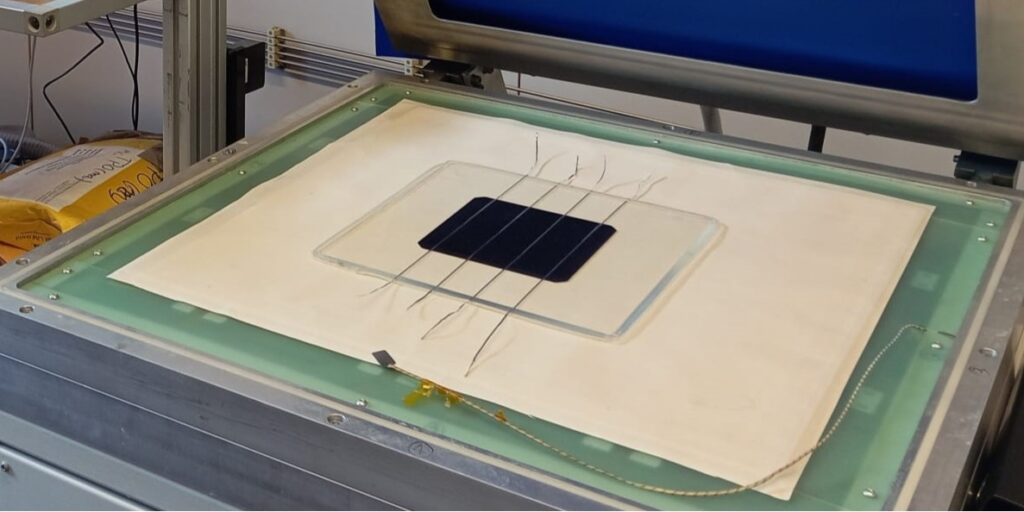The Italian research agency has tested new UV aging tests for solar PV-Mini modules made with UV-transparent polyolefines Encapsulantia and has discovered that thermal and chemical stability benefits in thermoplastic polypo-eating (TPO) compared.
A research team of the Italian National Agency for new technologies, energy and sustainable economic development (SNEA) performed accelerated UV aging tests on two types of Inkapsulantia, one was made of elastomer polyolphins (POE) and the other was thermoplastic polyolphyles (TPO), to compare performance) Encapsulants.
“Very UV-transparent Encapsulantia make it possible to use the entire wavelength oak from sunlight. Their use of the manufacture of a photovoltaic module is therefore particularly useful to increase the efficiency of the energy conversion. However, the formulation of an encapsulant that is UV transparent and at the same time is chemically resistant to demolition is particularly challenging and demanding, ”said Valeria Fiandra, corresponding author, said PV Magazine.
The team carried out an initial chemical structure analysis of the PV -lapsulantia. Het merkte op dat Fourier Transform Infrared Spectroscopy (FTIR) analyse onthulde dat de POE, gelabeld POE-8110, een elastomere copolymeer van ethyleen en propyleen was en de TPO een zijketen kristallijn polymer was: poly (ethyleen-co-octadecylacrylaat).
To verify the behavior in a realistic module configuration, the team of crystalline silicon (C -SI) devices of 30 cm x 30 cm fabricated. The composition of the mini modules was as follows: Glass on the front, semi-sliced C-Si cells, PET film on the back, plus one of the three insapsulants that were investigated that were applied according to the manufacturer’s instructions.
The UV aging tests pushed up to 6000 hours of irradiation and 1800 kWh/m2 UV dose to reveal the demolition effects on the different materials, according to the paper. The team has looked at how the UV influences the loss of electrical performance and to what extent. The results were compared with the performance of Standaard Eva, with the Eva-05HTL label.
The characterization was done with the help of X-ray fraction and Raman-Spectra were recorded. The samples were measured in the transmission mode. Yellowness Index (XI) measurements were also carried out at each sample measured in triplicate. The carbonyl index (CI) was followed and a SEM analysis (Scanning Electron Microscopy (SEM) was completed.
“While aging, all Inkapsulantia chemical breakdown undergone, according to Gelding, Polymerbinding and the formation of oxidation products containing carbonyl groups,” noted the team, adding that TPO is the “most chemical stable polymer”, the “Yi) value” the most stable “.
The team discovered that the most important relegation was detected for the mini device made with EVA-05HTL. “This result is due to the presence of the acetate group in the EVA molecule, absent in Poe and TPO, which leads to the production of acetic acid and both the corrosion of the metals and the reproduction of demolition,” said it.
Moreover, the PoE and TPO have maintained their performance better than Eva, “not only because they do not produce an acetic acid, but also because they are more thermal more stable,” the group said.
It also noted that the amount of UV radiation and temperature games “have a synergistic action in causing PV module degradation and have various influences on the structural integrity” of the polymers used for encapsulation.
“Our results about the variations in the optical, chemical and structural characteristics of the materials and about the electrical performance of the mini devices have shown that the mini-device made with the TPO film shows a higher stability in the long-term behavior compared to Poe and Eva,” Fiandra said.
Further research is currently underway to evaluate moisture permeability in mini devices made with the new Encapsulants, together with demolition effects on reliability and sustainability. The researchers are also working on improving the efficiency of PV modules for solar energy using functionalized Inkapsulantia with slightly writing properties, according to Fiandra.
The research was described in detail in “New high UV transparency PV Encapsulants: properties and demolition after accelerated UV aging tests,”Published by Polymer breakdown and stability.
This content is protected by copyright and may not be reused. If you want to work with us and reuse part of our content, please contact: editors@pv-magazine.com.

